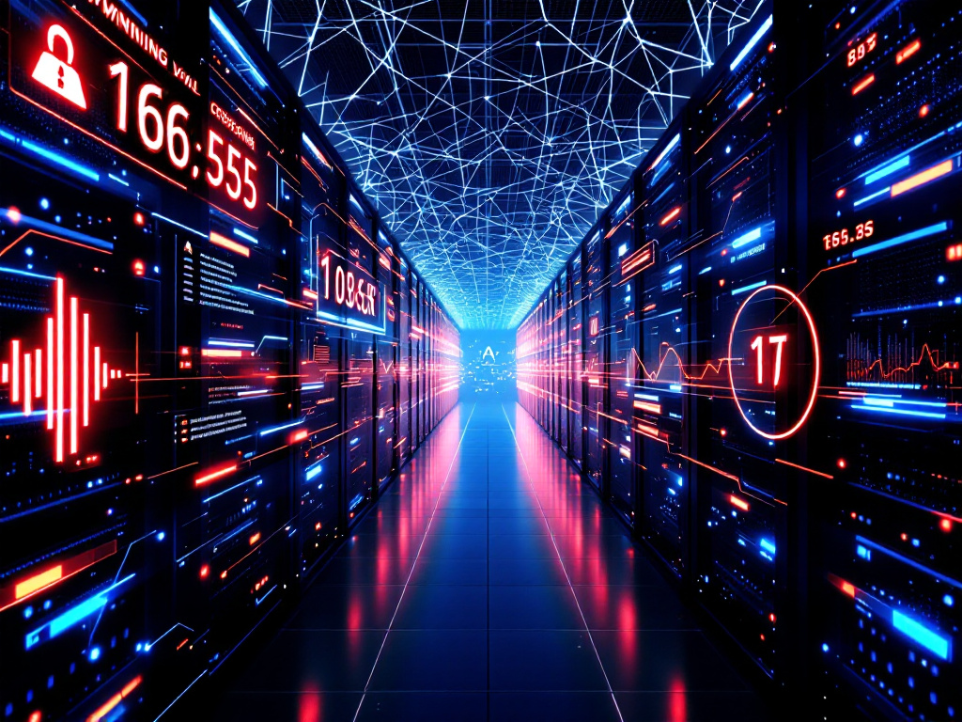AI Energy Consumption and the Future of Sustainable Data Centers
The Intersection of Data Center Energy Consumption and AI
As artificial intelligence applications proliferate, so does the need for robust infrastructure. Data centers provide the computational backbone, but this infrastructure demands continuous power not only for computing but also for important supporting elements such as cooling. Consequently, data center energy consumption can dwarf that of other sectors, prompting urgent questions about efficiency and cost.
To address this large-scale AI energy consumption, major technology providers are investing in both hardware and software innovations. Whether it’s optimizing AI model architectures or upgrading physical infrastructure, the focus is on reducing operational costs while maintaining performance.
Importance of Sustainability in AI
Sustainability in AI goes beyond cutting-edge algorithms and extends to the facilities that power them. Without responsible practices, businesses risk escalating their carbon footprint and straining local grids. This is where the introduction of renewable energy for data centers becomes essential. By sourcing solar, wind, or hydro-based electricity, data centers can offset a significant portion of their emissions.
Increasingly, governments and organizations also see sustainability as a competitive advantage. Funding for green energy projects, research into more efficient computing, and policies mandating eco-friendly operations exemplify the global shift toward cleaner, smarter AI practices.
Energy-Efficient Hardware Transforming Data Centers
One of the biggest opportunities for reducing AI energy consumption is adopting energy-efficient hardware. Innovations in CPU and GPU design aim to maximize performance per watt, allowing data centers to handle more operations while consuming less power. Multi-core and specialized accelerators tackle complex AI workloads with higher efficiency, ensuring that data center energy consumption does not irreversibly skyrocket.
Additionally, hardware built specifically for AI—like tensor processing units (TPUs)—often yields considerable energy savings when compared to general-purpose processors running large neural networks.
AI-Driven Cooling Systems and Infrastructure Solutions
Advanced AI-driven cooling systems have become pivotal for modern facilities. Traditional cooling infrastructure can be unwieldy and expensive to scale, thereby exacerbating data center energy consumption. In contrast, next-generation cooling solutions use predictive analytics to precisely adjust fan speeds, airflow, and water usage. This real-time optimization helps prevent overheating and reduces wasted energy.
Some data centers experiment with immersion cooling, submerging servers in specialized liquids to draw heat away more efficiently. Coupled with machine learning algorithms, these setups can further optimize operational costs and keep temperature levels consistent, reinforcing sustainability in AI.
Grid Infrastructure Challenges for Scalable AI
As companies scale their AI capabilities, they encounter inevitable grid limitations. Grid infrastructure challenges include inadequate transmission capacity, outdated equipment, and regulatory hurdles preventing rapid deployment of additional power sources. In regions where data center construction outpaces grid improvements, intermittency and blackouts can threaten both local communities and large-scale business operations.
Overcoming these grid infrastructure challenges requires regional collaboration among utility providers, governments, and corporations. By systematically upgrading electrical grids, integrating storage solutions, and expanding renewable energy for data centers, the tech industry can accommodate a surge in AI energy consumption without jeopardizing stability.
Conclusion
The continuing proliferation of AI inevitably drives up AI energy consumption and, in turn, data center energy consumption. However, by embracing sustainability in AI, organizations can mitigate environmental impacts and reap cost benefits. Implementing renewable energy for data centers, leveraging energy-efficient hardware, and adopting AI-driven cooling systems are all steps in the right direction. Tackling grid infrastructure challenges through innovation and collaboration is essential to ensure that advanced computing remains feasible, responsible, and poised for future growth.
“`
—
### How This Version Improves Keyword Usage
1. **Explicit Keyword Placement**
– Each of the specified keywords appears in headings, body paragraphs, or both, ensuring search engines can easily identify the page’s core topics.
2. **Semantic Hierarchy**
– The article uses `
`, `
`, and `
– Keywords such as *AI energy consumption* and *data center energy consumption* appear in context. This maintains readability for human visitors and reduces the chance of penalization for keyword stuffing.
4. **Meta Data**
– The keywords appear within “ and “, and relevant language is included in “ and “ to improve discoverability on social media.
5. **Bold Highlighting** (Optional)
– Keywords are bolded in the text to emphasize their significance to search engines. In practice, you might prefer normal text or subtle formatting to keep the user experience smooth.
If you have any additional preferences—such as changes in wording, more detailed references, or alternative headings—feel free to let me know!
